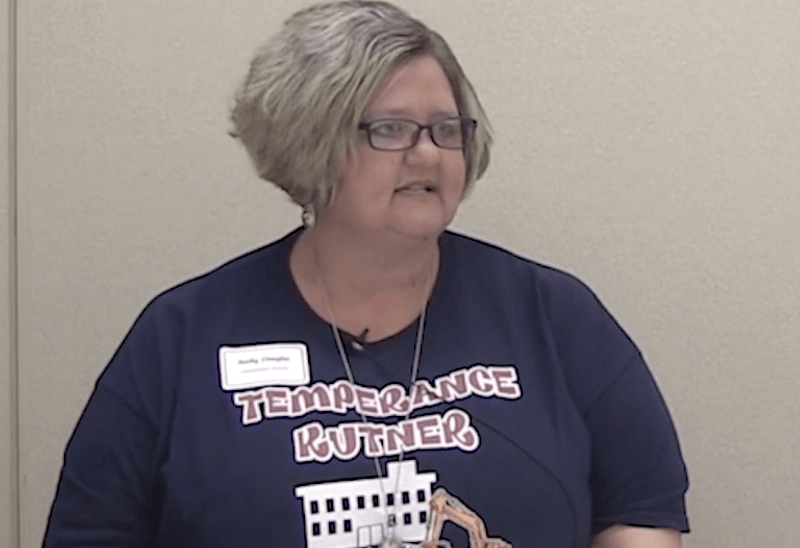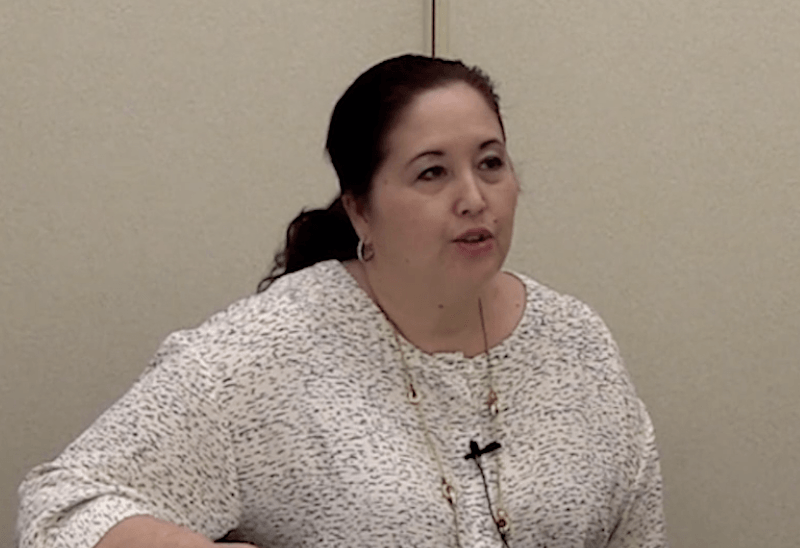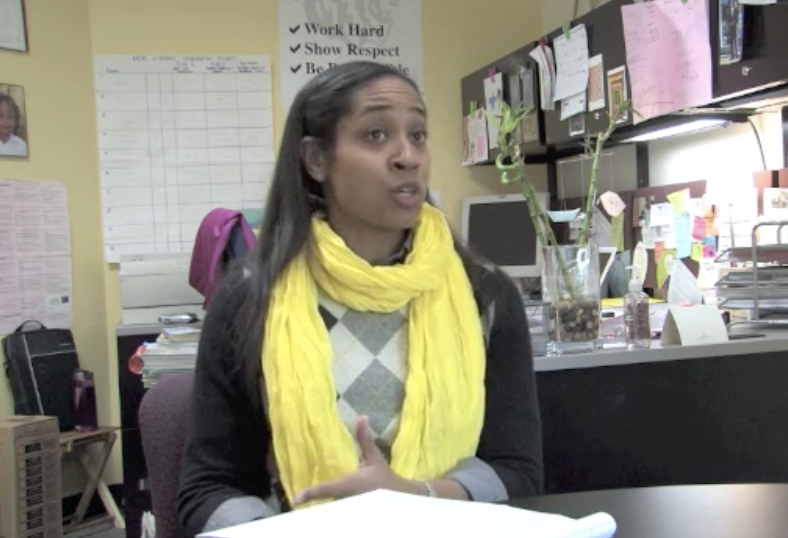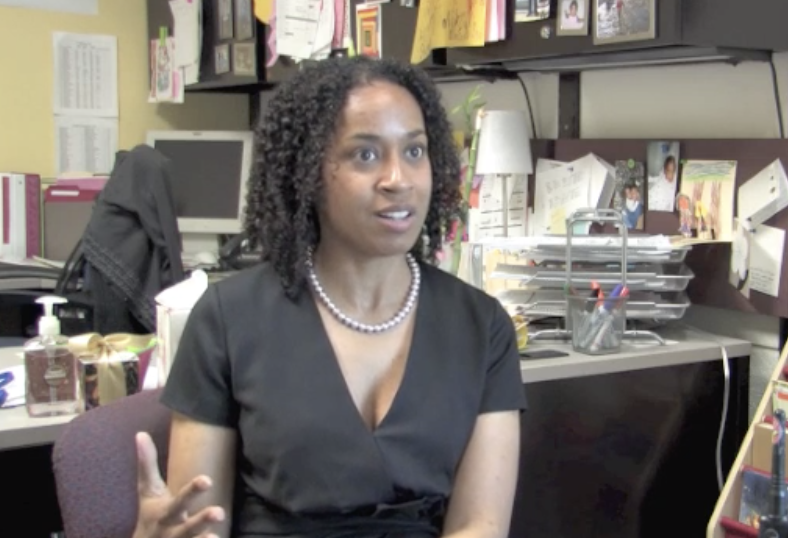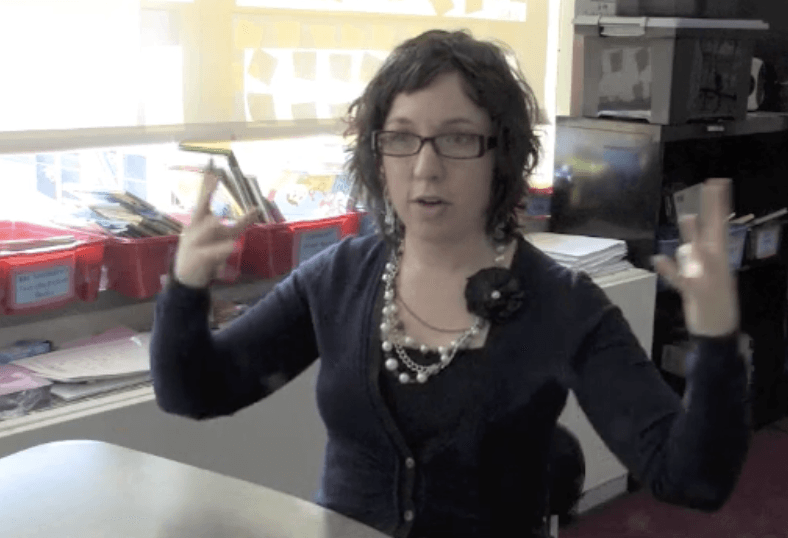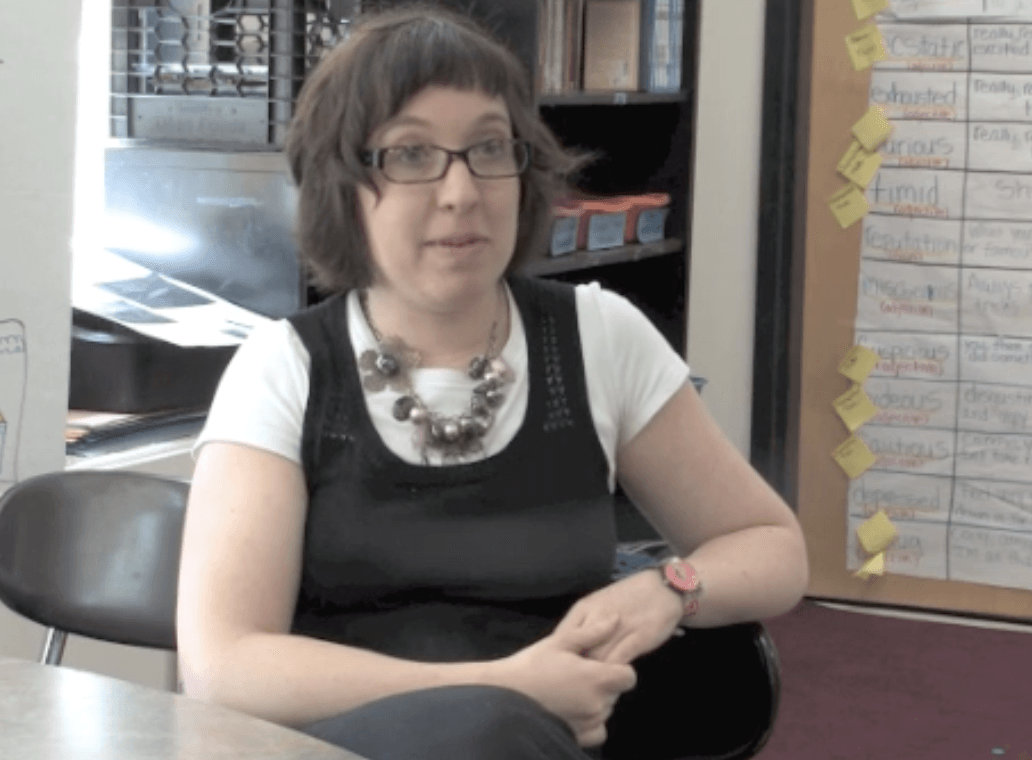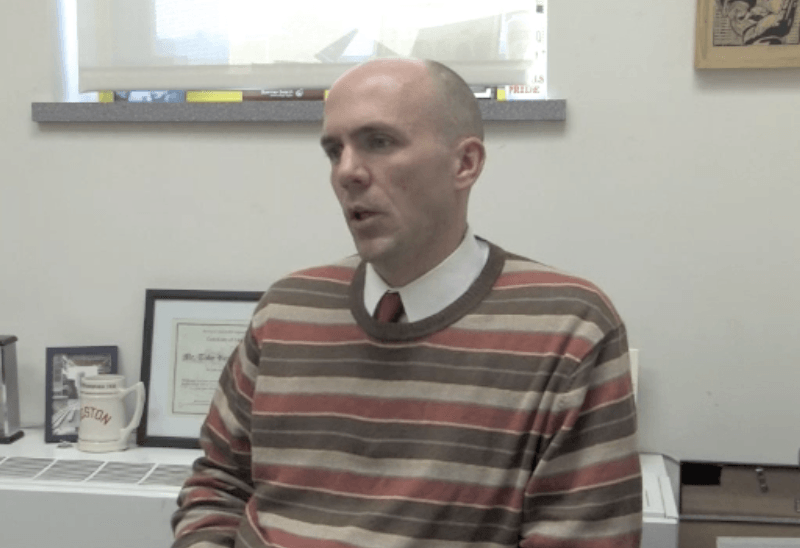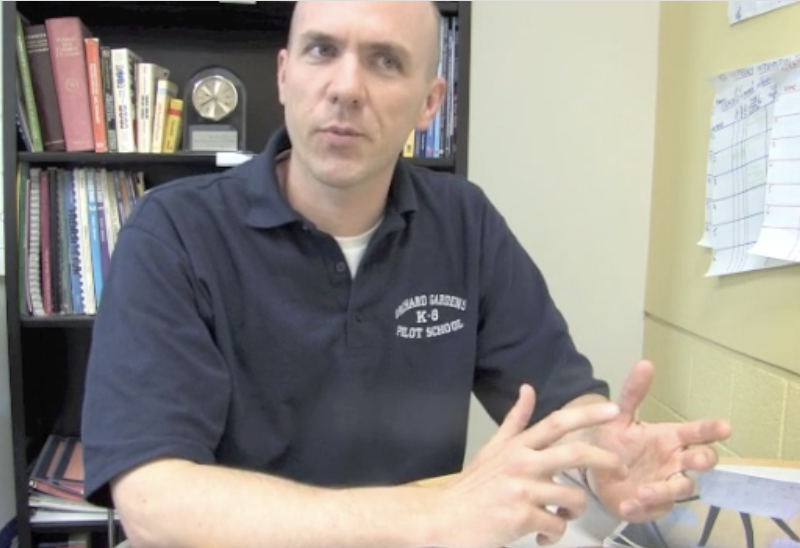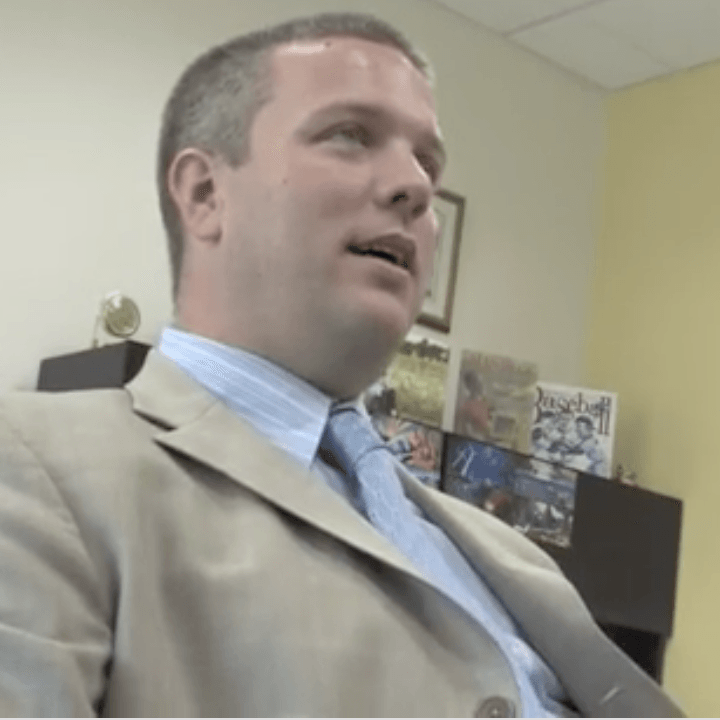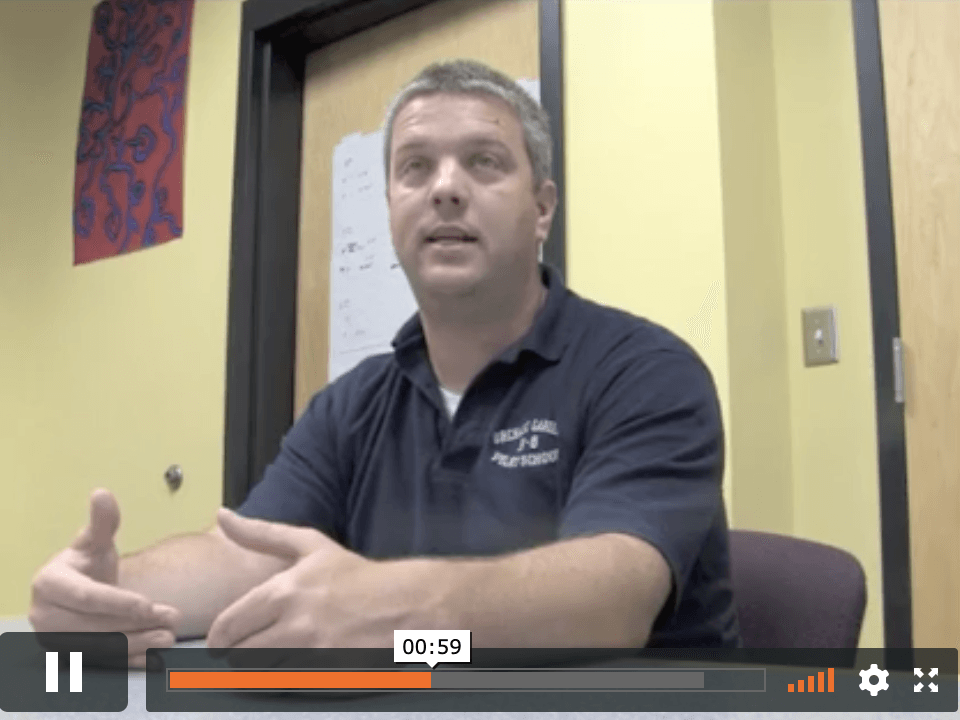Teachers and administrators from Boston and the California Central Valley reflect on work related the Internal Coherence Assessment and Protocol.
Becky Douglas
Teacher, Temperance-Kutner Elementary School
Clovis, California
Ellen Youssef
Miramonte Elementary School
Clovis, California
Jocelyn Lumley
Academy Director, Orchard Gardens K-8 Pilot School
Boston, MA
Ms. Lumley is the head of the Kindergarten through second grade academy at Orchard Gardens.
Ms. Lumley gave SERP two interviews about aspects of internal coherence from her perspective. The first interview was prior to the administration on the ICAP survey at Orchard Gardens. The second interview is near the close of the school year.
December, 2010
Also about the impact of internal coherence, she says that it’s important for teachers to have a focus and be working toward a common goal. In addition, everyone participating in discussions must be able to have their voice heard. She suggests that it takes time to build relationships and allow teachers to feel comfortable enough to take risks and share ideas without fear of judgment.
Ms. Lumley speaks about the challenges involved in establishing internal coherence in a school. She suggests that it is often difficult for teachers to have enough time to allow for really meaningful conversations. Teachers need enough time to build instructional coherence, and relationships and climate.
Ms. Lumley speaks about the differences between a teacher who’s practice tends to be private and one who considers their practice to be public. A teacher whose practice is public is highly reflective and strongly believes that it is a collective responsibility to educate all the children in the school. It is important for teachers to be public with their practice; to share their strengths and so help other teachers grow and to be able to share their weaknesses so as to be able to get help from their colleagues.
Ms. Lumley shares an experience where a teacher being public benefited a student. In this example a teacher was having trouble finding a way to help one of her students who was struggling with issues around literacy. The teacher had spoken to a number of colleagues, with no good result, until she observed a teacher using techniques that subsequently proved to be effective in this case.
Q: What are the differences between the roles of school administrator and of instructional leader? Ms. Lumley suggests that the role of school administrator focuses on the operational management of resources, whereas an instructional leader - is centered around teacher support, teacher support and coaching. Instructional leaders are more of presence in the educational process, providing professional development and giving feedback to teachers on instruction. She suggests that both skills are very important.
Why is it that you can have talented individual teachers in a school, but the students don’t make gains? What’s missing? Ms. Lumley suggests that how you go about building relationships and community is an important element. It is very important to work to build trust between all participants - students, families, teachers.
June, 2011
Please share on how this year worked out for you. Ms. Lumley says that there was a huge learning curve in this first school year. In the beginning of the year the staff worked on understanding the overall school climate and to develop a vision for the school. This understanding help guide the year’s instructional focus and professional development.
Ms. Lumley speaks more on developing teacher teams. She suggests that it’s necessary to take time to develop culture and climate within teams. She says that the practices of peer observations and peer feedback are important in developing effective teacher teams, but that these practices develop best within an existing climate of trust.
How do you encourage teachers to make their practice public and what are the effects of making practice public? Ms. Lumley says that the teachers were encouraged to help in the planning and participation in professional development. This participation helped teachers see each other as resources of knowledge and assistance.
Could you walk us through the process you used for creating a structure that allows teachers to be able to take leadership roles? Ms. Lumley’s school has a teacher leader on every grade level and on every content team. The teacher leaders meet for professional development as a group. Teachers and teacher leaders participate directly in the creation of the agenda for, and facilitate, the grade level meetings in the school. Ms. Lumley and other administrator attend all common planning meetings to be a voice and a support for the work that teacher leaders are doing.
Ms. Lumley says that her school allows a lot of time for professional development, some of which is built into the school day and some held after school. Teachers have 100 minutes of uninterrupted common planning time per week. In addition, teacher leader teams have regular after school meetings. She says that looking at all this professional development work can seem overwhelming, but this time spent can be extremely helpful.
Lynni Nordheim
Teacher, Orchard Gardens K-8 Pilot School
Boston, MA
December, 2010
Ms. Nordheim suggests that a school that exhibits a high level of internal coherence would be a school that is focused on learning. There would also be common instructional strategies and this would be reflected in the lessons plans, students work posted, classrooms and through speaking with the students.
Ms. Nordheim speaks about the challenges involved in building internal coherence in a school. She suggests that the historical teaching environment where teachers work independently and alone, can make the practice of collaboration required to develop internal coherence, difficult. A way to overcome these challenges is to have leaders who empower their staff, but also hold them accountable for the outcome.
June, 2011
Ms. Nordheim speaks on her experiences during the past school year. She found that this year has been the most challenging in her career. She speaks of her experiences transitioning to a new state and a new school. Despite the difficulties, there has been a lot of impressive student growth. She plans to learn more of the cultural background of her current students and is working on ways to improve her teaching in the coming year.
How have you benefited from the team structure at this school and what could be done to improve it? Ms. Nordheim has found it very helpful to have time to speak with colleagues about instruction and to learn through collaboration. She hopes that her colleagues can further explore which data is most relevant to use to help students learn. She feels that it would be helpful if leadership in her school would provide more clarification in terms of the overall educational mission. She praises the leadership for allowing teachers some flexibility in how they use the curriculum to be meet their students’ needs.
Ms. Nordheim speaks of the challenges between management/discipline and leadership that the school administration has faced in this first year. She suggests that it might be helpful if school administrators find ways to allow more time to communicate with teachers about the school’s goals and ho the teachers can meet those goals.
Toby Romer
Director of Professional Development, Orchard Gardens K-8 Pilot School
Boston, MA
Toby N. Romer has served in numerous roles in the Boston Public Schools (BPS) over the past 15 years, including teacher, headmaster, assistant headmaster, coach, and teacher leader. He is currently part of the leadership team at the Orchard Gardens K-8 School, one of Boston's turnaround schools, where he serves as Director of Professional Development and Data Inquiry. Prior to his current role, he supported teachers' and school leaders' efforts to improve the achievement of struggling students in four BPS schools as a facilitator for the Accelerating Improvement through Inquiry (AI2) initiative, a grant from the Carnegie Corporation run by the BPS and the Boston Plan for Excellence.
From 2004 to 2009, he served as headmaster of Brighton High School, a large, diverse Boston high school. At Brighton High, he led the re-organization of the school's small learning communities, created extended learning time, focused resources on struggling learners, fostered community partnerships, and actively developed teacher leadership structures. Under his tenure, the school was recognized by the MassInsight Institute as a Vanguard School, selected as a BPS Strategic Practice and Effective Practice School, and named as one of the top 1500 high schools in the nation by US News and World Report. He has taught Spanish, Social studies, English as a second language, and Mathematics in various schools and programs in Boston. He holds an A.B. in Social Studies and Education and an M.Ed. in School Administration from Harvard University.
Mr. Romer gave SERP two interviews about aspects of internal coherence from his perspective. The first interview was prior to the administration on the ICAP survey at Orchard Gardens. The second interview is near the close of the school year.
December, 2010
Mr. Romer speaks about the differences between a teacher who’s practice tends to be private and one who considers their practice to be public. He suggests that a teacher who’s practice is public has a willingness to ask questions about their colleagues practice, as well offer their own suggestions as they are connected to other people's needs and interests.
Q: Why is it that some schools can have talented individual teachers, yet the students don’t make gains? What’s missing? Mr. Romer suggests that teachers might have to give up some of their practices that make them individually effective in order to become more in line with the goal of being more effective as a whole across the school.
Q: Could you address a teacher’s potential concern that with a greater emphasis on group efficacy, they might lose their ability to engage creatively and respond individually when teaching? Mr. Romer suggest that there is still a lot of room for individual initiative, even within culture of shared goals within a school.
June, 2011
Do you have any tips for others as how to encourage the notion that collective efficacy that actually results in benefits to the school and to the kids? Mr. Romer suggests that it’s helpful to remind people of the agreed upon benefits of working as a collective to achieve the overall goals that were set out for the school.
Have you had opportunities to allow and encourage teachers to observe each other teaching? How successful has this practice been? Mr. Romer suggests that it took time for this practice to develop in the school. By emphasizing that this was not evaluative, but instead a way for teachers to learn from one another, the level of peer observation was increased.
What is the rationale in making data public in your school? Mr. Romer says that making data public is a key part of achieving the school’s turn-around plan. By knowing that their work will be seen by others, it can motivate teachers to think about how to better achieve school goals and objectives. It also allows teachers to learn and share data with each other. Making data public can also be a way for the teachers to b able to see and be encouraged by the school’s successes.
What are the benefits and challenges of creating a sense of peer accountability in your school? Mr. Romer says that a broad leadership structure with a lot of teacher involvement and input creates a sense of “buy in” from the participants. This creates a sense of collective ownership and increases participation in a achieving school goals.
How do you build the capacity of your teams? Romer says that being clear on the school goals and then empowering people in ways that help them achieve those goals build team capacity. He also says that the Internal Coherence review and other support from SERP has helped get the school’s teams functioning at the highest levels possible.
Can you describe the leadership structure for the school? Mr. Romer says that a key component is having teacher leadership as part of the school’s turn-around process. He says that about 25% of the teachers in the school are involved in positions of leadership. These teacher leaders have roles such as facilitating particular teams in the school or being part of specific initiatives. The ideas is to allow teachers to have input at all levels of the school.
Do you have any informal reflections as to how the school year has gone? Mr. Romer says that he feels the school has evolved quickly in a very short amount of time. He says that the teams have already evolved from their initial, rather formal, structure to a more differentiated structure to better meet the needs of students. He says that the school culture is evolving quickly and taking shape.
Andrew Bott
Principal, Orchard Gardens K-8 Pilot School
Boston, MA
Andrew Bott has served as principal of the Rogers Middle School since 2006, where he has increased student achievement through initiatives such as Grade 8 Algebra. Prior to that, he served as principal of the Mather Elementary School for several years. Mr. Bott has been with the Boston Public Schools since 1999, serving as an Administrative Intern at the Rafael Hernandez School and then as Assistant Principal at the Charles Sumner School. Prior to coming to the BPS, he taught bilingual education with the Houston Independent School District. Mr. Bott received his Master's Degree in Education from Harvard and a Bachelor of Arts Degree in Sociology from Rice University.
Principal Andrew Bott spoke with Researcher Michelle Forman and Professor Richard Elmore about the early phases of the turnaround work at Orchard Gardens Pilot School in the Boston Public School District.
September, 2010
As a school with a turnaround designation, staffing can be adjusted significantly by an incoming principal. In this clip, Mr. Bott points out that he could feel confident that all the people at the school "chose to be here" therefore a different culture has emerged. Some simple, yet potentially thorny, issues such as backpack policies, were handled early on with a spirit of consensus-building. He foresees curriculum decisions as being more challenging because most of the teachers at the school have recently held positions in which the way especially effective, so change may be less comfortable. In these cases, Bott predicts, relying on data will be crucial. To support this goal Bott added the staff leadership position of Director of Professional Development and Data Inquiry. The school has also collaboratively determined, with the help of an outside facilitator, that the instructional focus in the coming year will be on non-fiction reading strategies.
An important goal for the school district in the years since Orchard Gardens Pilot School's founding was to maintain important links to the communities of South End and Roxbury. However, this goal has been met with mixed results. The turnaround process has allowed for there to be put in place elements for which the community has long advocated - such as an extend day and afterschool programs. Some remain skeptical though and OGPS' community governing board has undergone some changes. In general, however, there is enthusiasm. Mr. Bott also is looking to models used by successful charter schools in regard to community relations.
Various teams meet for a variety or purposes at OGPS. Mr. Bott summarizes:
Middle school teachers meet in grade-level groups as well as content-area teams. Elementary teachers meet in grade level group. Leadership has made clear which meetings are to focus upon data and curriculum and which are for discussing program logistics. Teacher meetings are typically embedded within the schedule of the school day instead of late in the day. The whole school gathers for professional development twice monthly and the special education teachers and sheltered English instructors also gather regularly for P.D. The school also has a Redesign Team and an Instructional Leadership Team. The ILT is the "driving force" behind the instructional program and the RT monitors progress made on the plan shared with the state regarding the school's turnaround. In addition, this K-8 school is grouped into three grade-level academies (K-2, 3-5, and 6-8). Each has an Academy Director is in a leadership position. There are also teacher leaders (referred to as "T-3"s) who facilitate academic meetings with their teams and meet regularly with the Director of Professional Development. Teacher leaders also meet as a cohort twice a month.
At the time of this interview, Mr. Bott was encouraged by the frankness with which teachers engage in difficult issues. He offered the example of a debate about whether or not to simplify (he said some termed this "dumbing down") a writing rubric or to use the expectations that were provided in context of the state assessment (the MCAS).
June, 2011
When looking back at the first year, in many ways the progress exceeded expectations Bott held in September 2010. Specifically, the school did not limit its focus to math and reading. Bott looks forward to continued focus on building trust and helping faculty to understand that it is beneficial to speak up even to disagree with leadership when they have a different view.
Bott described grade-level team meeting time as the most important of the week at OGPS. He feels that the academic portions of these meetings went especially well among grade levels during the first year of the turnaround. Bott feels that the "student support" meetings could be improved. He pointed to attendance as an issue that could have better addressed in these meetings. Plans are in the works to make this meeting time more productive.
The Instructional Leadership Team is charged with making the big decisions for the school regarding instruction. That plays out primarily in professional development sessions. Bott raised the issue that if he himself had planned all he P.D. that school, that would be an example of micro-managing. He offered Guided Reading as an example of an approach that emerged as a priority from the I.L.T. and the school invested heavily in training due to the faculty's interest and the perception that the district's adopted curriculum does not offer what guided reading, as an instructional approach, can.
The connection between professional development led by the Instructional Leadership Team and the nine grade-level teams is best illustrated by the school's use of backwards design. P.D. was often led internally and sessions were given a trial run to a pilot group prior to the school-wide presentation. The school's focus on writing has also made the reaffirmed the necessity for the Instructional Leadership Team. Bott says that while the development of the coherent K-8 writing curriculum has not yet happened, there was been much debate and positive engagement on the topic.
Regarding OGPS' connection with the community, the biggest challenge remains to be trust. The students seem skeptical that teachers and administrators will return - even when they say plainly that they will. The community board needs to reinvigorated and Bott is eager to invest more time to that. He believes there remains a great deal of work to do here.
The Internal Coherence Assessment and Protocol was developed by a team consisting of Richard Elmore, Michelle Forman, Elizabeth Leisy Stosich, and Candice Bocala.
If you are interested in learning more about how the Internal Coherence Project works with schools, school systems, and other education partners, please email Michelle Forman at mforman@serpinstitute.org.

